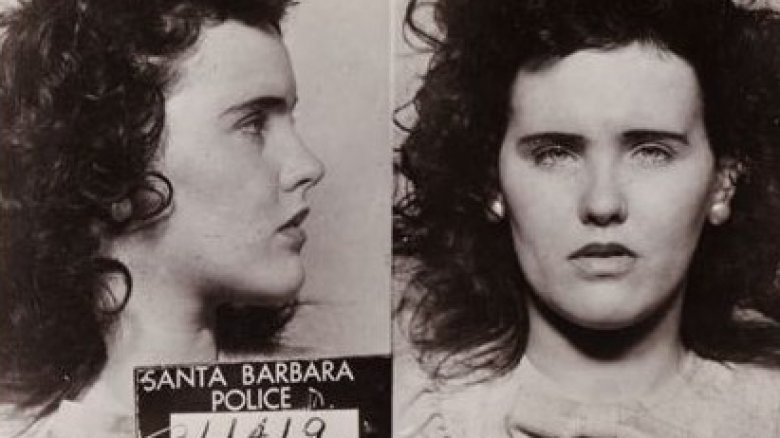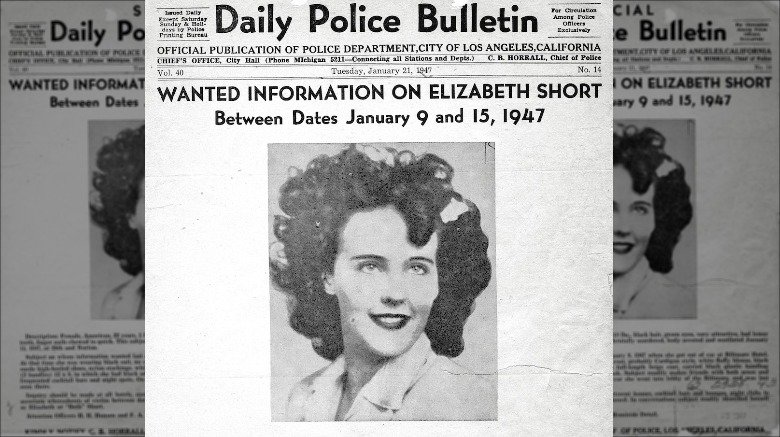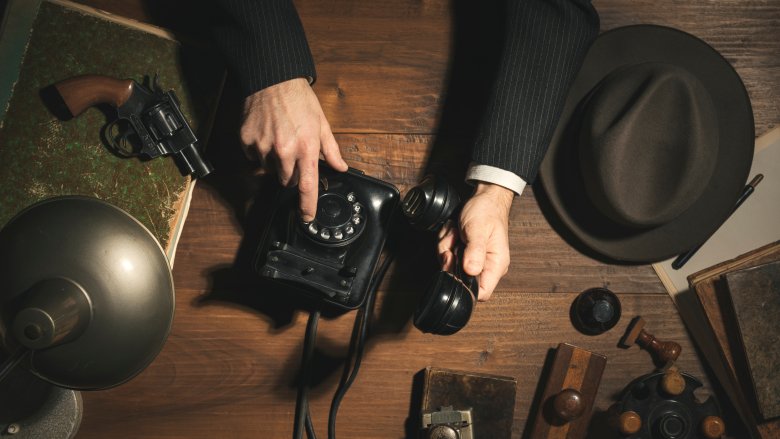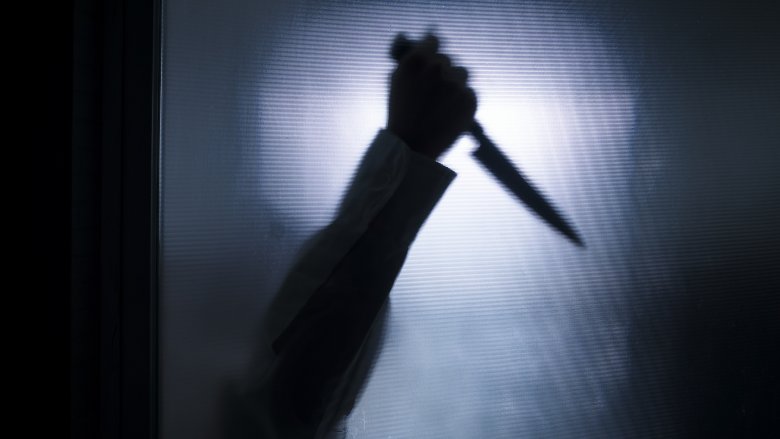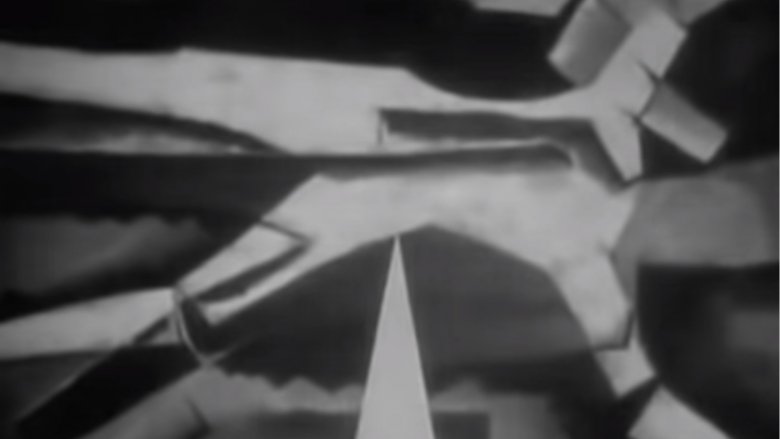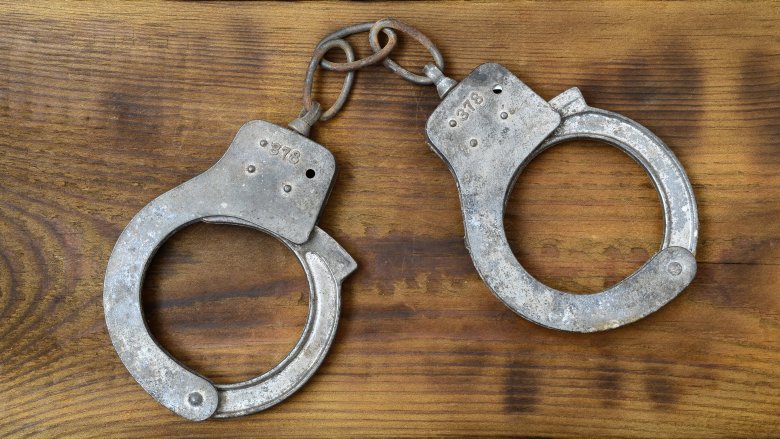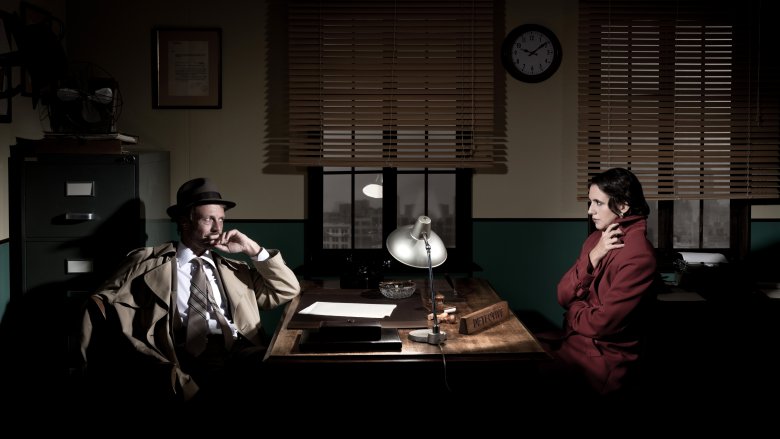What's Come Out About The Black Dahlia
Sometimes, there's a crime that's so so horrific, it doesn't fade into obscurity, and years after the blood is washed away, the public still wonders. And today, people still ask: who killed the beautiful woman with the black hair, and left her dismembered, disfigured body on the side of the street in a Los Angeles neighborhood?
Her name was Elizabeth Short, and she was better known as the Black Dahlia. Just 22-years-old when she was killed in 1947, the incredible, grotesque violence of her murder has kept her from fading into obscurity.
And fading away happens to a lot of unsolved cases — and there's a staggering number of them. According to Project Cold Case, there were almost 185,000 unsolved murder and manslaughter cases on record between 1980 and 2008 alone.The FBI reports solving only about 59 percent of murder cases in California, and that's just in recent years. That's a lot of victims who didn't get justice, but why does everyone remember the Black Dahlia? And has any information come out in the decades since her death? Absolutely.
A refresher on the Black Dahlia case details
She was found on the morning of January 15, 1947, by a mother and her young daughter, walking along the street in LA's Leimert Park. At first, Betty Bersinger simply thought someone had discarded a mannequin along the street, and it wasn't until she got closer that she saw just what — or rather, who — she had found.
The then-unidentified Elizabeth Short had been cut in half at the waist. There was no blood, her intestines had been removed, and her mouth had been cut to her ears. She had been washed clean, then dumped, naked, in a field.
According to the BBC, she was given the nickname the Black Dahlia in part because of the 1946 film The Blue Dahlia (which told the story of a man suspected of killing his cheating wife), and partially because of her distinctive black hair and her tendency to wear black clothes. The nickname was just a small part of the media frenzy that kicked off around the case, driven in part by the particularly horrible nature of the crime, and in part because it was seen as a cautionary tale: the beautiful young girl who heads to Hollywood with dreams of becoming a star, and who meets a very bad end that would ironically be immortalized on the big and small screen alike. There were dozens of suspects and dozens of people interviewed, but the case was never solved and remains open.
The Black Dahlia crime scene was even more horrific than first reported
The Black Dahlia captured the nation's imagination from the first time headlines advertised the ghastly, grisly nature of the crime. But it was even worse than the headlines proclaimed.
The actual cause of her death was determined to be a blow to the head; there were also signs that her skull had rebounded off something hard when she was struck. There was at least one grotesque bit of mutilation that had been done before she was killed: based on the bruising and damage to her face, her cheeks were cut into a so-called "Glasgow smile" while she was still alive (via Medium).
The rest happened after her death. Her right breast was removed, her genital area was covered with a series of lacerations, and she was completely scrubbed free of blood with a brush (several bristles from the brush were recovered). The Washington Post adds that the body had been posed, stretched out on the ground, and there were signs of sodomy. She had a tattoo of a rose on her thigh, which had been sliced off and placed inside her (via Rolling Stone). It's possible — but still debated — that the last reliable sighting of her was a full six days before her body was discovered, making it possible (but again, highly debated) that she was kidnapped and held by her killer for almost a week. And according to the autopsy (via The Guardian), her stomach was filled with feces.
Media and press interference was bad... very bad
It was the editor of the Los Angeles Examiner who first reached out to the FBI to give the heads' up they were going to be asked to help with the case. The feds were already seeing huge problems, starting with the fact that by the time law enforcement got to the crime scene, reporters had already been there, documented the entire thing, and picked up the evidence. One FBI memo says: "... throughout the entire investigation the reporters have talked to witnesses and published facts which were bound to hinder the investigation of the local department." It also says reporters had set up in the headquarters of law enforcement, and there was no such thing as a confidential phone conversation or a piece of evidence that they didn't see first ... or, at least, second.
Even worse, the BBC says reporters had gotten wind of the victim's identity before her family had been notified. The Los Angeles Examiner got in touch with her mother, told her that her daughter had won a beauty contest, and they wanted to talk to her ... so they flew her to LA to tell her what had really happened, all to get an exclusive interview with her response.
Incredibly, that level of interference still happens today: Deadline reported the media got a head start on law enforcement when it came to the San Bernardino shooters, getting invited into suspects' apartment by their landlord. And such interference can be devastating to an investigation.
The splitting of her body was actually a complex medical procedure
According to the FBI archives, the eerily professional method in which the killer had cut the body in half put the focus of the investigation on someone with medical or dissection skills. They even investigated students at the University of Southern California Medical School, but it turns out that the cut was more than just a simple, clean procedure.
Back when the body was discovered, the LAPD's forensic expert called it "medical finesse." Former US Navy medic and Hollywood homicide detective Steve Hodel writes that his research found that the procedure was actually a very specific one, taught through the 1930s as a way of successfully dividing the body by cutting through two specific vertebrae and no other bone. It's called a hemicorpectomy, and it's such a difficult procedure that various experts have stated there's no way it could have been done by someone without extensive medical knowledge.
And it's still done today. According to a study published in Science Daily in 2009, a hemicorporectomy is rare, but it can be done to halt illnesses — like certain types of cancers — that are contained in the lower part of the body but would otherwise be fatal.
One detective believes his father was the Black Dahlia's killer
Officially, Elizabeth Short's murder remains unsolved, but there's one man — retired homicide detective Steve Hodel — who believes he knows exactly who killed her: his own father, George Hodel. According to Hodel (via The Guardian), it wasn't long after his father's death in 1999 that he found himself going through his dad's personal belongings. Among the photos in a small album were two that looked exactly like Elizabeth Short. It was enough to get him to look into any connection the elder Hodel might have had with her, and it opened a rabbit hole of dark history filled with a ton of evidence no one has been able to disprove and that has, in fact, gotten the attention of active law enforcement.
The LAPD was taunted by letters from the killer; handwriting experts say the contents bear a striking similarity to George's writing. Among the documents for construction on his home are receipts for bags of concrete — the same brand and size recovered from near the body, thought to be how the killer got her to the dump site. He attended medical school at the same time they were teaching hemicorpectomy. That's just starters.
Hodel presented all the evidence he collected after two years of researching to an acquaintance in the LA county district attorney's office. Getting the response that yes, there was enough for charges to be filed — if he were still alive — Hodel kept going.
And he was actually on the suspect list
Hodel released a book detailing what he'd discovered. It fell into the hands of the Los Angeles Times, who were able to get more information from the district attorney, and that's when they found out that George Hodel was, indeed, one of six suspects the department had honed in on all those years ago.
And they had some eerie but inconclusive evidence, including taped telephone conversations where a woman is suddenly heard screaming in the background, and another where George says, "Supposin' I did kill the Black Dahlia. They couldn't prove it now. They can't talk to my secretary anymore because she's dead."
George Hodel wasn't just a regular old anybody. Vanity Fair called him "the most pathologically decadent man in Los Angeles," a doctor who specialized in treating venereal disease among the A-list crowd. His daughter, Tamar — one of 11 children with five different women — accused her father of sexual abuse from the time she was 11, and of making her pose nude for artist friends that included Man Ray. George Hodel was arrested in 1949 on incest charges, but he was acquitted.
Links to the Chop-Chop Ladies
Steve Hodel thinks the Black Dahlia wasn't the only woman his father killed, and he's linked that case with others that are equally disturbing.
According to The Washington Post, George Hodel fled the US for the Philippines in 1950. About a decade later, a young woman, Lucila Lalu, left her hometown of Candaba for the big city of Manila, says Esquire. She flourished there, finding love, having a child, and becoming a successful businesswoman. Then, tragedy struck. Lalu was just 28-years-old when she disappeared in 1967. In May, police started finding body parts: a pair of legs cut into four pieces, then a torso with arms that allowed it to be identified as Lalu. As in the Short case, the killer was thought to be someone with medical knowledge. (This and later, unrelated cases of murder in the Philippines where the women were gruesomely dismembered would become known as "The Chop-Chop Ladies.")
Also as with the Black Dahlia case, there were a number of suspects, no conclusive evidence, and the case remains open to this day. Hodel believes his father killed not only Lalu, but has said: "I suspect there are many bodies in Asia."
The Black Dahlia murder may have had a terrifying connection to Man Ray
When Short's body was discovered, she was displayed in a spread-eagled pose with her arms at an angle to her body and her hands raised. Amateur crimefighters and professional homicide detective Steve Hodel have seen that pose imitated a lot — in the works of Man Ray, a close personal friend of suspect George Hodel. Even without the speculated connection between George Hodel and Short, it's almost undeniable that there's a lot of similarities between Short's posed body and the artist's works.
Take Man Ray's painting "Black Widow." It's dated 1915, but it shows the black figure of a woman, arms over her head, bisected with a bloody knife. That position is seen again in his 1934 work "Minotaur," the study of a woman's naked torso posed the same way. Then, there's "The Lovers," a painting with the prone, naked body of a woman and giant red lips hovering in the sky above her. Some suggest Short's face was cut up in an homage to the 1933 work.
Another eerie image pops up in Man Ray's 1926 experimental film "Emak Bakia." At almost precisely the halfway mark, there's an abstract image of a person, positioned as Short was, bisected by the point of a triangle. Coincidence? Or was her murder and carefully positioned body an homage to Man Ray?
The LAPD was reluctant to suggest the Black Dahlia was murdered by a serial killer, but...
On February 10, 1947, another murder shocked Los Angeles. This one would also go unsolved, and it was no less grisly than Short's murder just a few short weeks before. The victim was 44-year-old Jeanne French, nurse, aviator, and member of the Women's Air Reserve. According to LA Weekly, she had been badly beaten and dumped with "F*CK YOU B.D." written on her torso in her own lipstick, followed by "TEX."
While the media leapt on the connection, the LAPD never officially linked the two. Steve Hodel has found some compelling evidence that does link them, and it has a lot to do with the killer's "catch-me-if-you-can" attitude that went back to the 1946 murder of 6-year-old Suzanne Degnan.
She was killed in Chicago, bisected with a hemicorpectomy, and her bent arms were discovered in a nearby sewer off Hollywood Street. Fast forward a year, skip over to a neighborhood just outside of Hollywood, and Short's body was left near the intersection of Degnan Blvd. What about French? She was left along Mountain View Ave., two weeks after Short was buried in Mountain View Cemetery in Oakland.
There were accusations that the cops let the Black Dahlia's killer go
Steve Hodel wasn't the only one that continued researching the Black Dahlia case decades after it happened, and in 2018, Piu Eatwell released the book Black Dahlia, Red Rose (via Rolling Stone) that suggested she'd found proof it was another original suspect — Leslie Duane Dillon — who was the killer.
She also says the LAPD knew that, and let him go because of the connections between just one corrupt cop and a reputed co-conspirator in the murder, a local movie theatre and nightclub owner named Mark Hansen.
Eatwell says that after the book was published, the son of former LAPD officer Richard Williams reached out to her. Williams was originally on the Black Dahlia case, and had confided in his son that Dillon was always an incredibly likely suspect, along with Hansen and someone named Jeff Connors. Apparently, The Los Angeles Examiner had been mailed Hansen's address book, along with a packet of Short's belongings. Dillon came to police attention when he put the blame on Connors, and while Dillon knew details of the case that were thought to be secret, Connors told a different story altogether ... and everyone was released. The rest of the story paints Short as a member of a hotel-robbing gang, and her involvement led to her murder. Truth or fiction?
There were a shocking number of confessions to the Black Dahlia's murder
It's a bizarre phenomenon, but false confessions are a real problem when it comes to police work. There's no shortage of reasons as to why someone might give a false confession, but according to The Los Angeles Times, there was a record number in the Black Dahlia case. More than 500 people have handed themselves over to the police and confessed, including one man who walked into the LAPD headquarters and confessed so many times they started calling him "Confessin' Tom."
There were both men and women who claimed they had killed Short, with at least one woman saying she'd done it as revenge after Short stole her significant other. The list of false confessors was staggeringly varied, and included housewives, soldiers, and even members of the clergy.
Even more surprisingly, false confessions are still happening to this day, and some of those confessors weren't even born when the murder happened.
